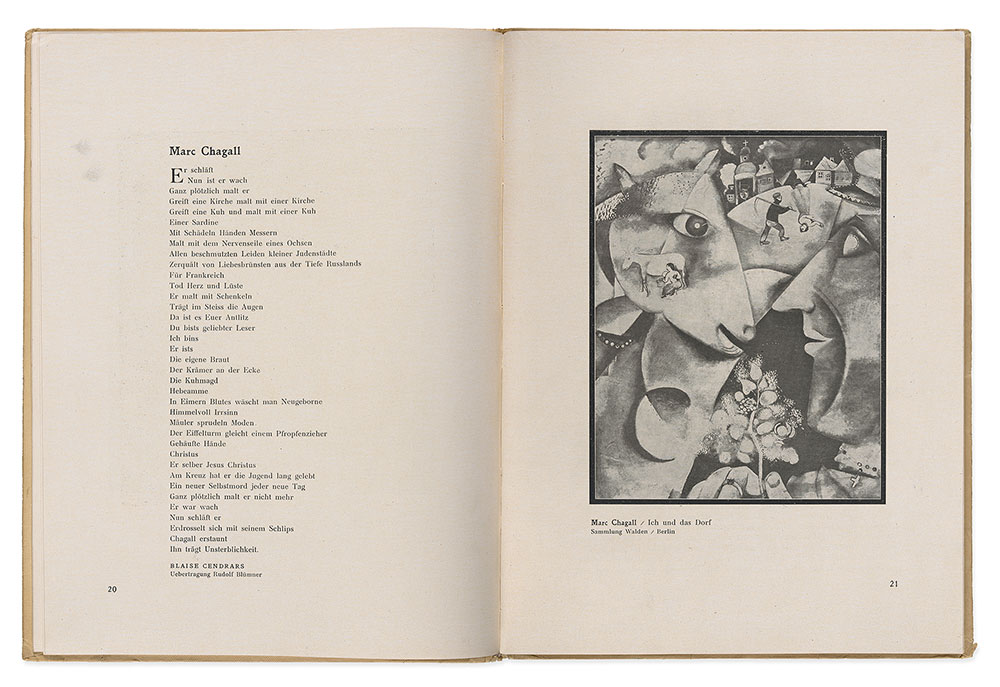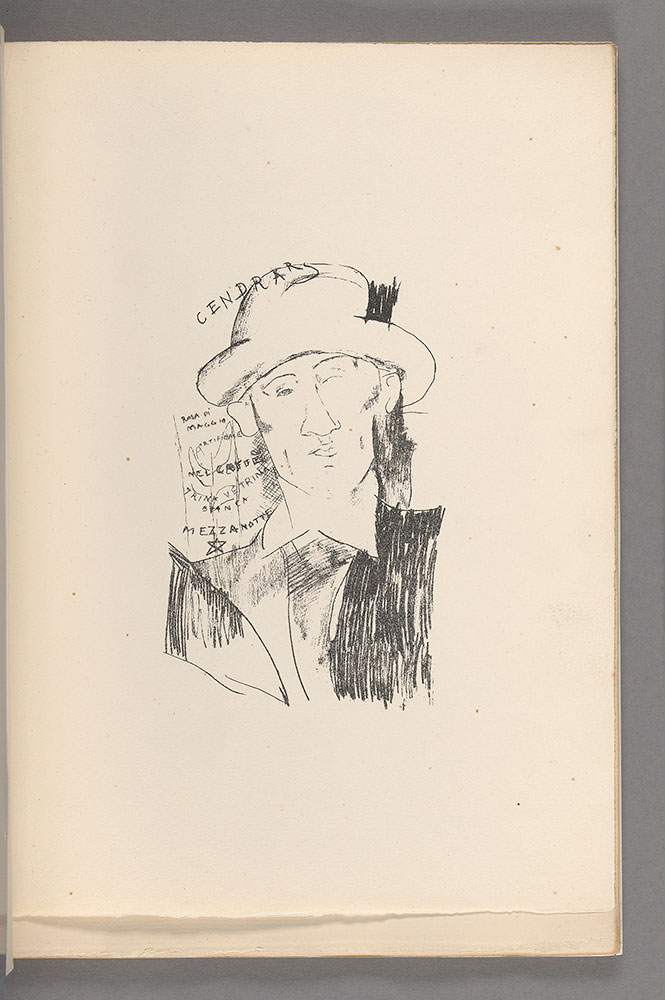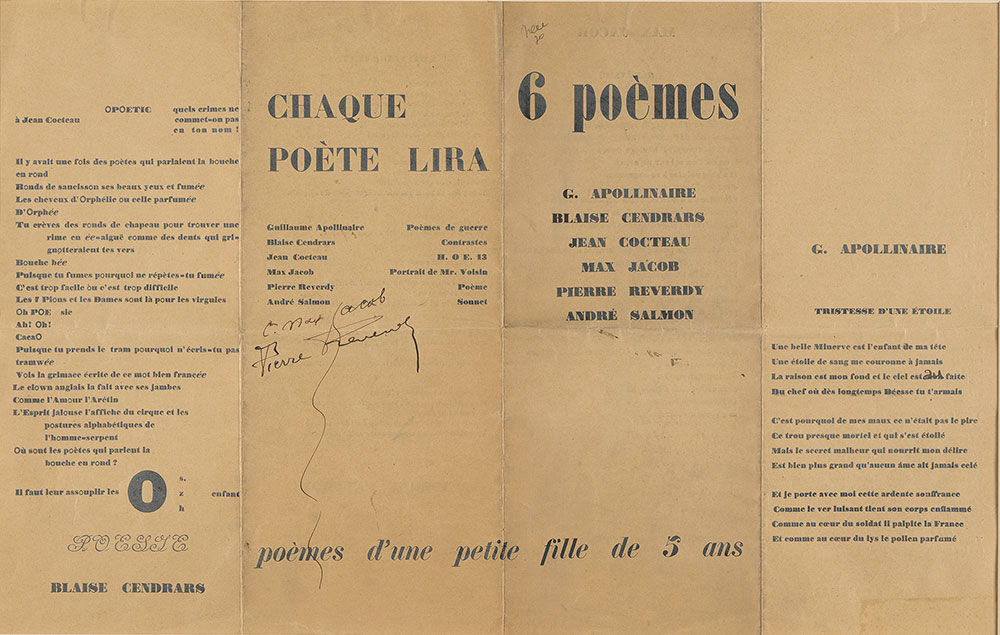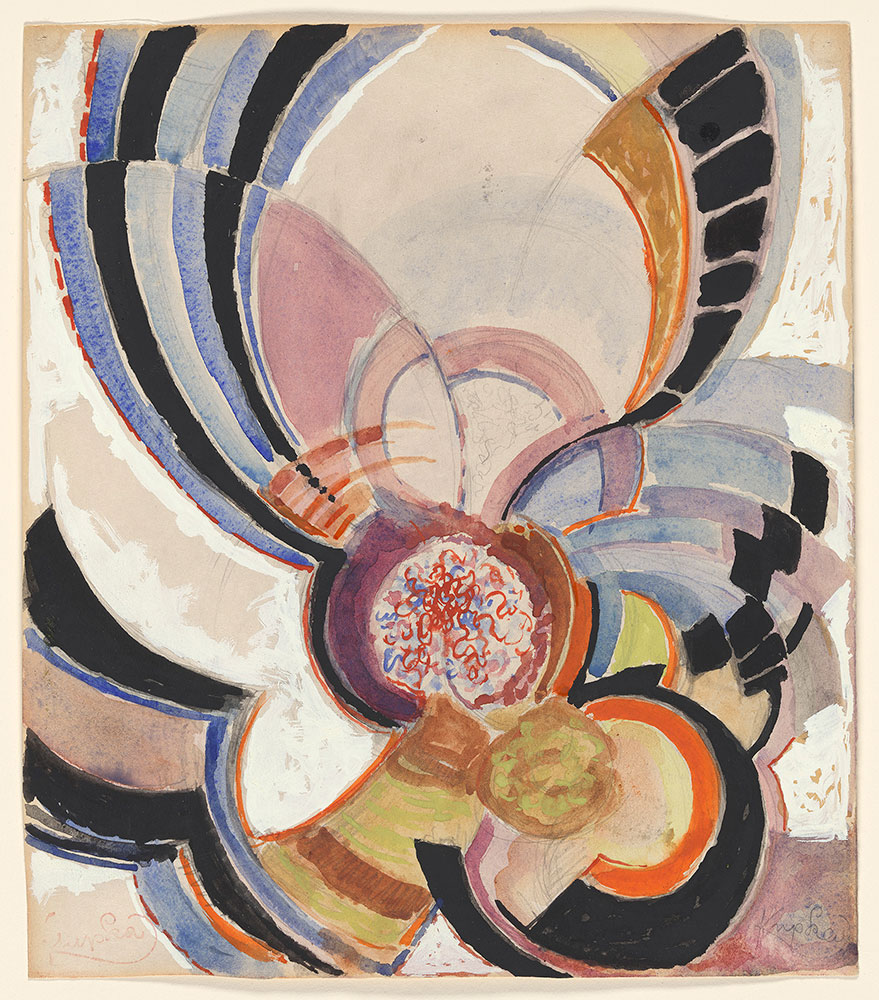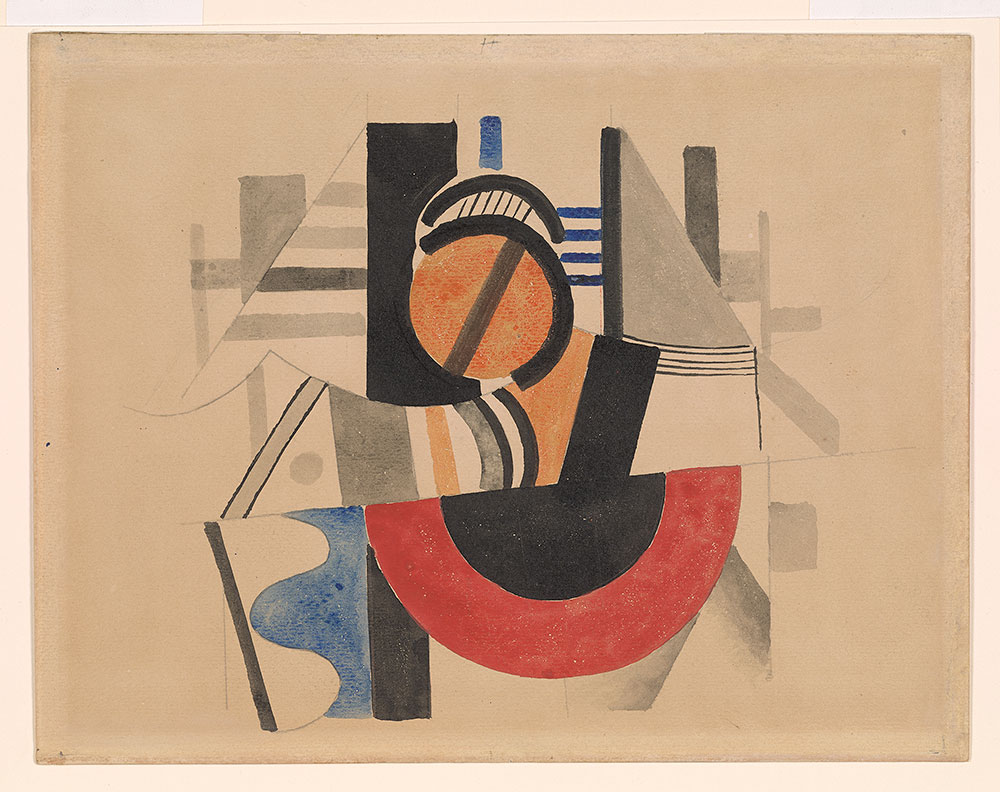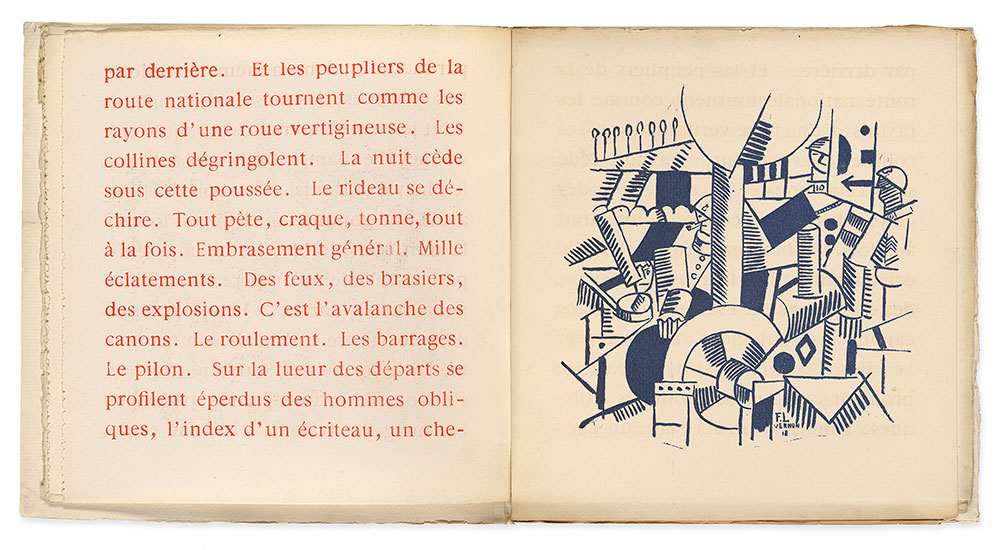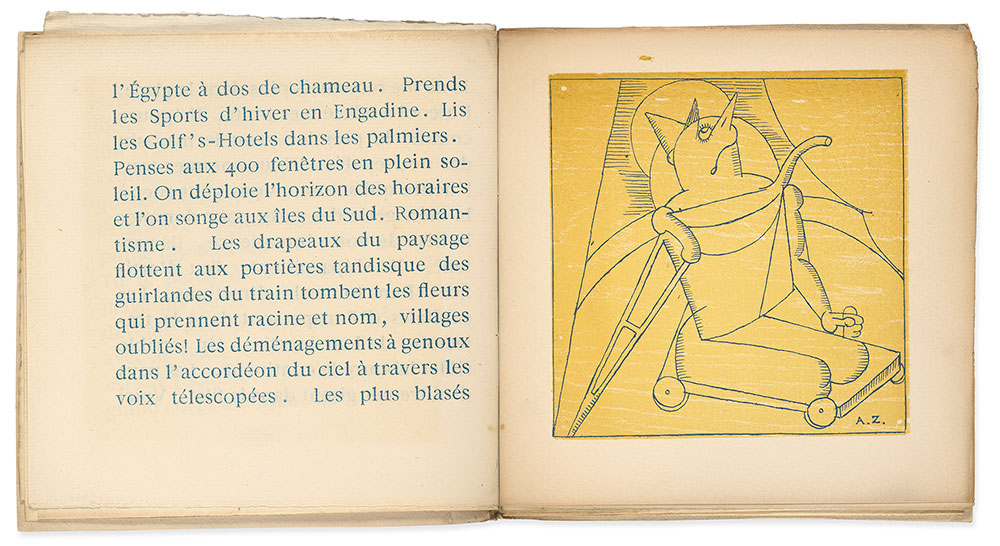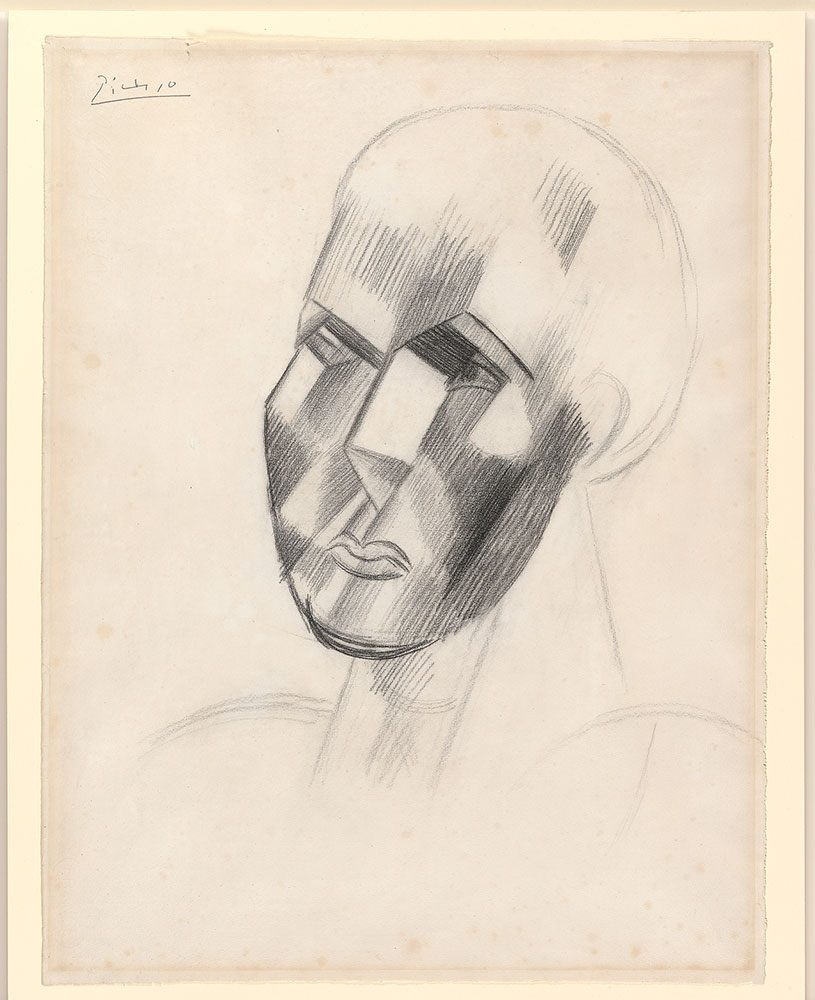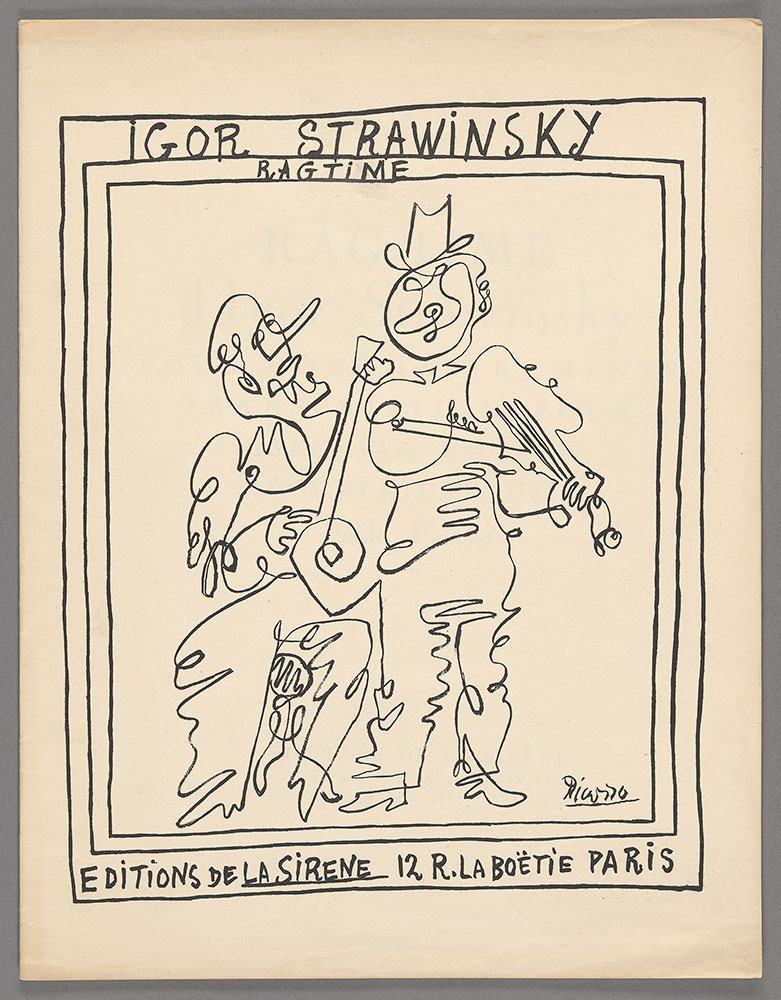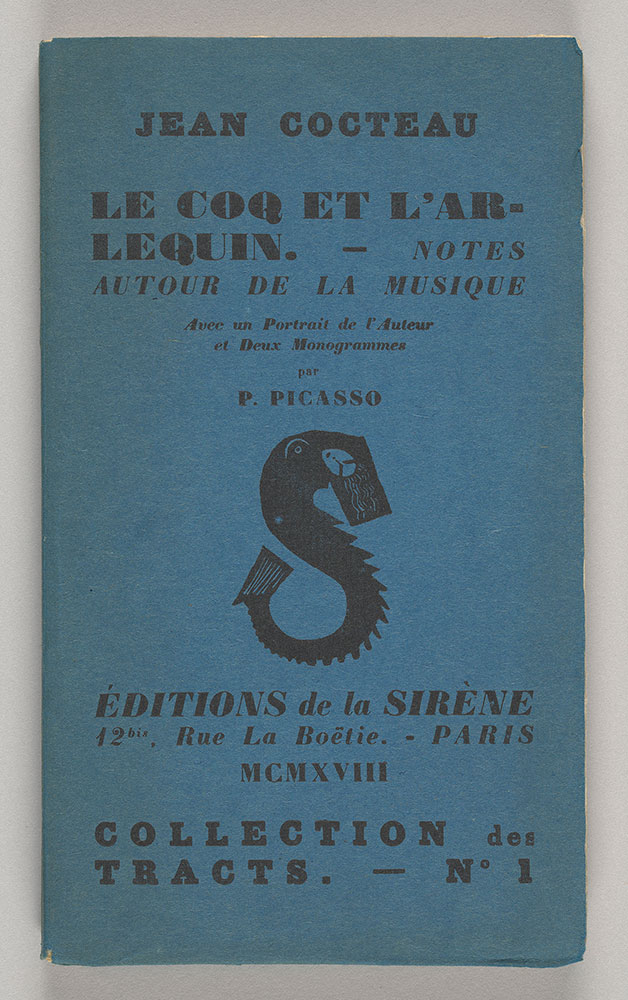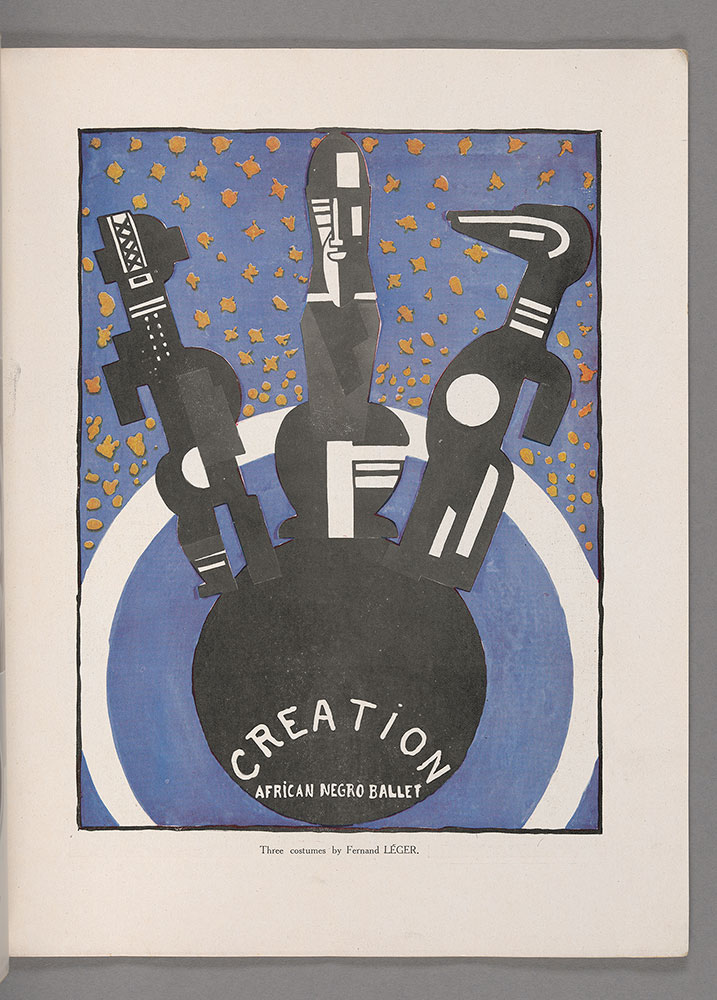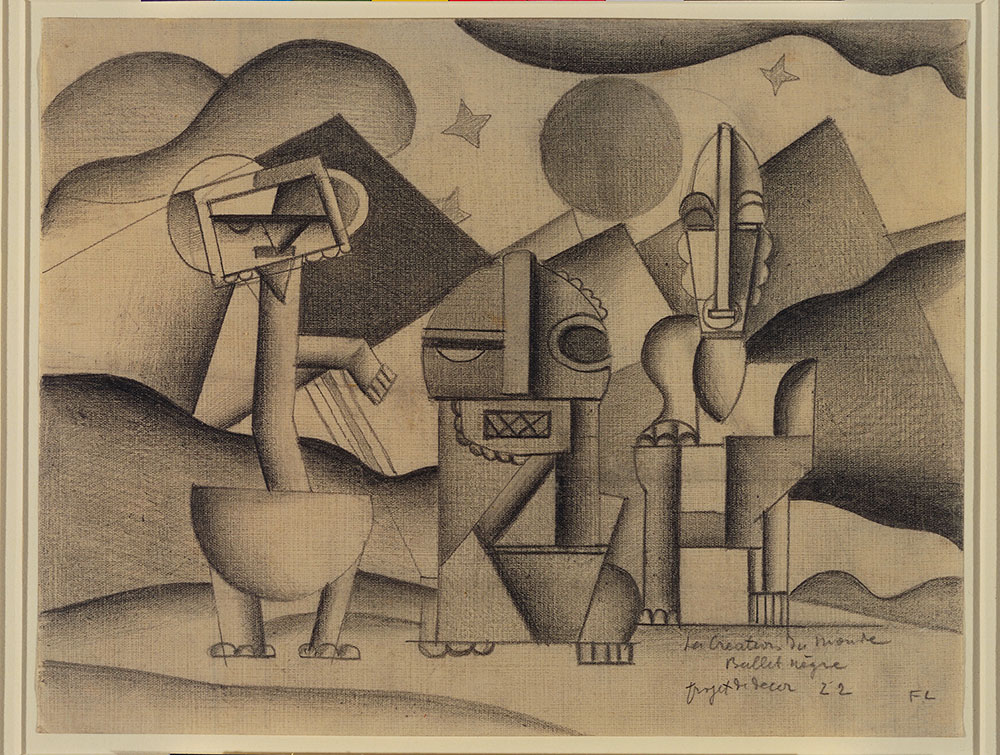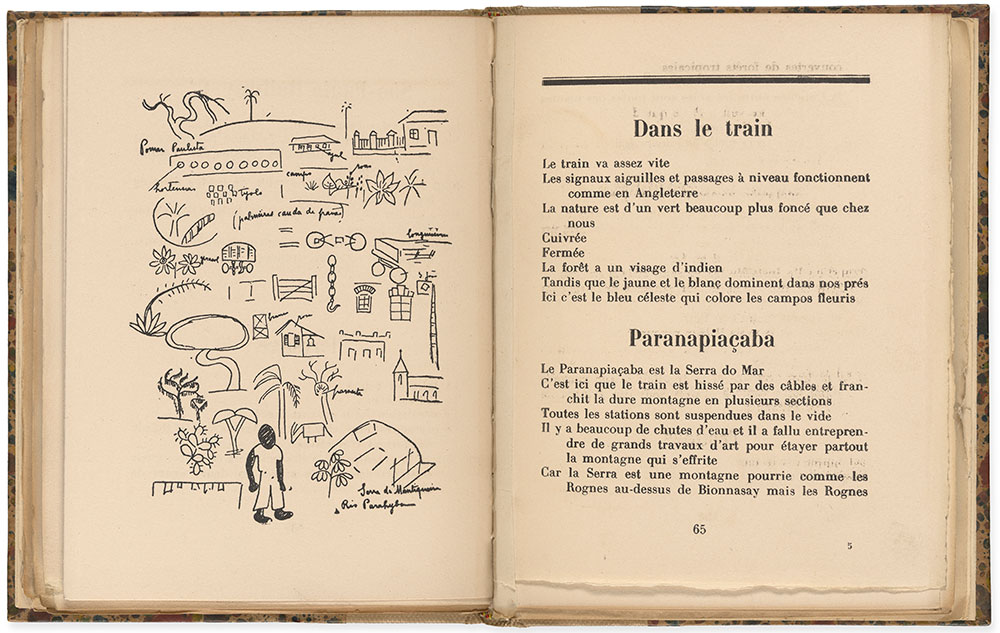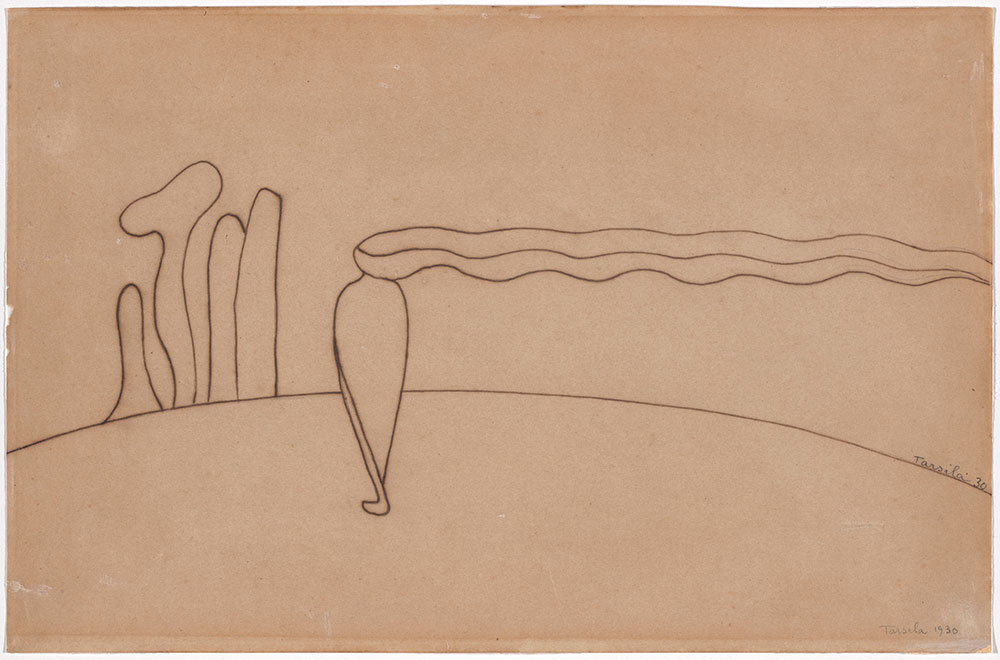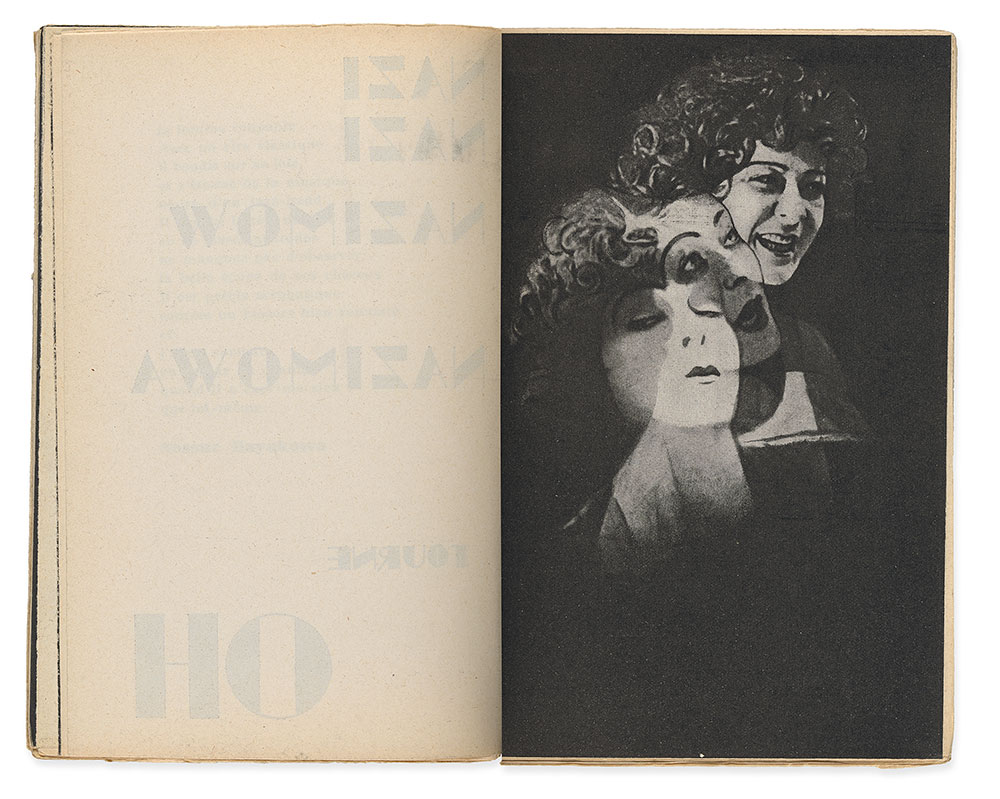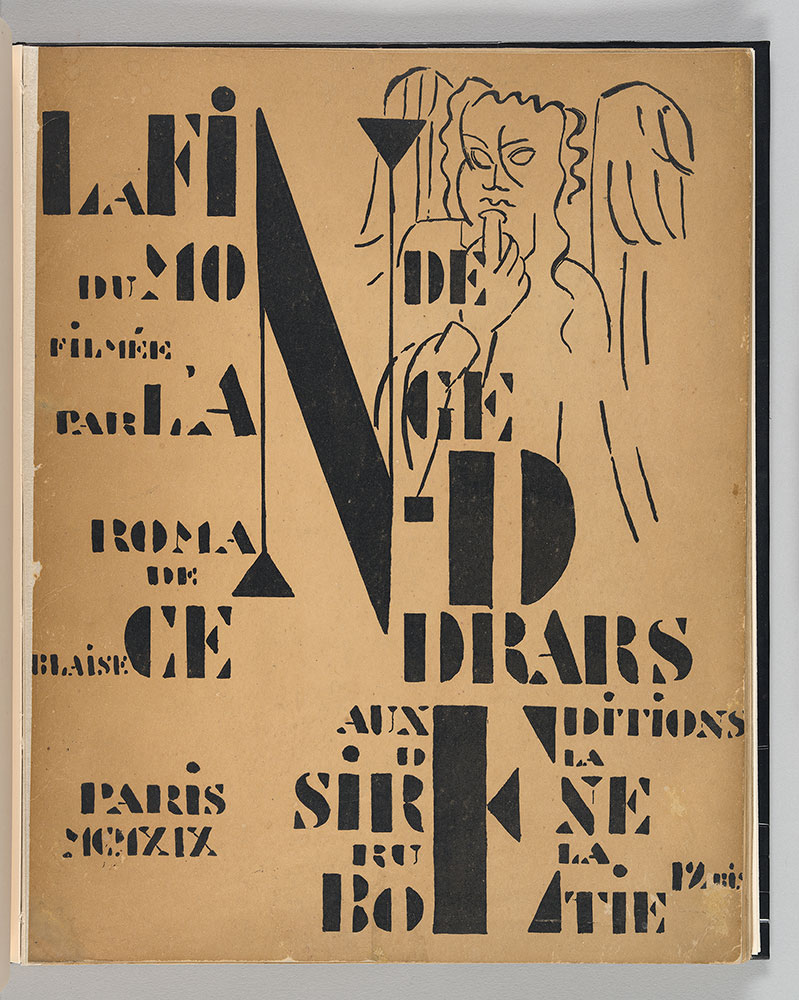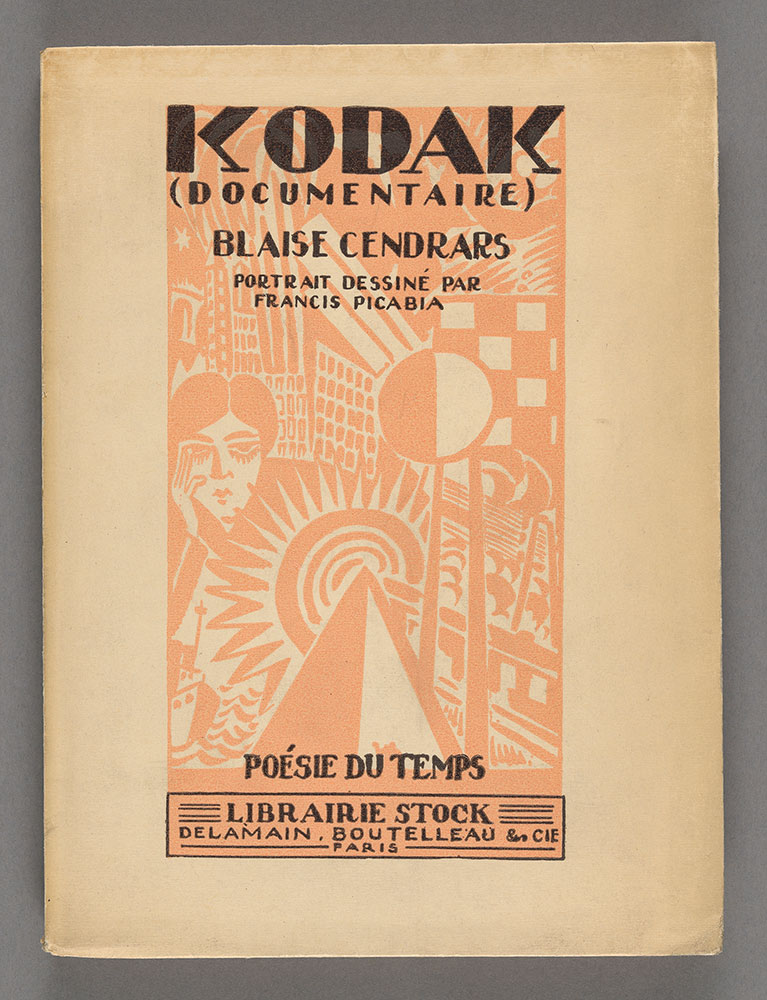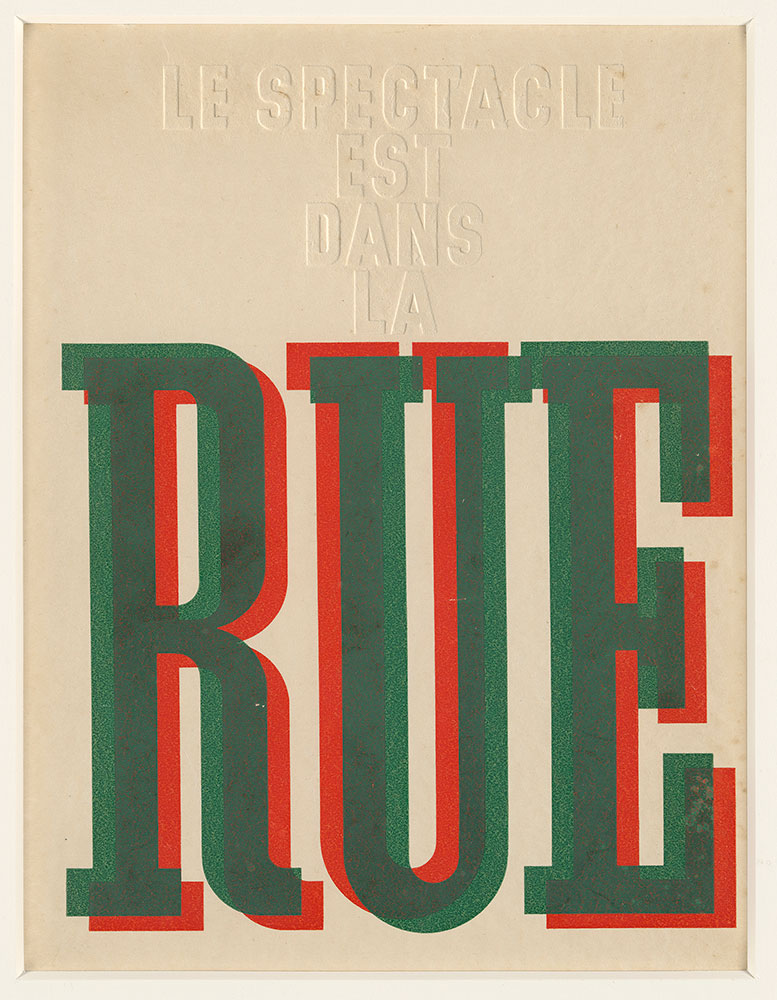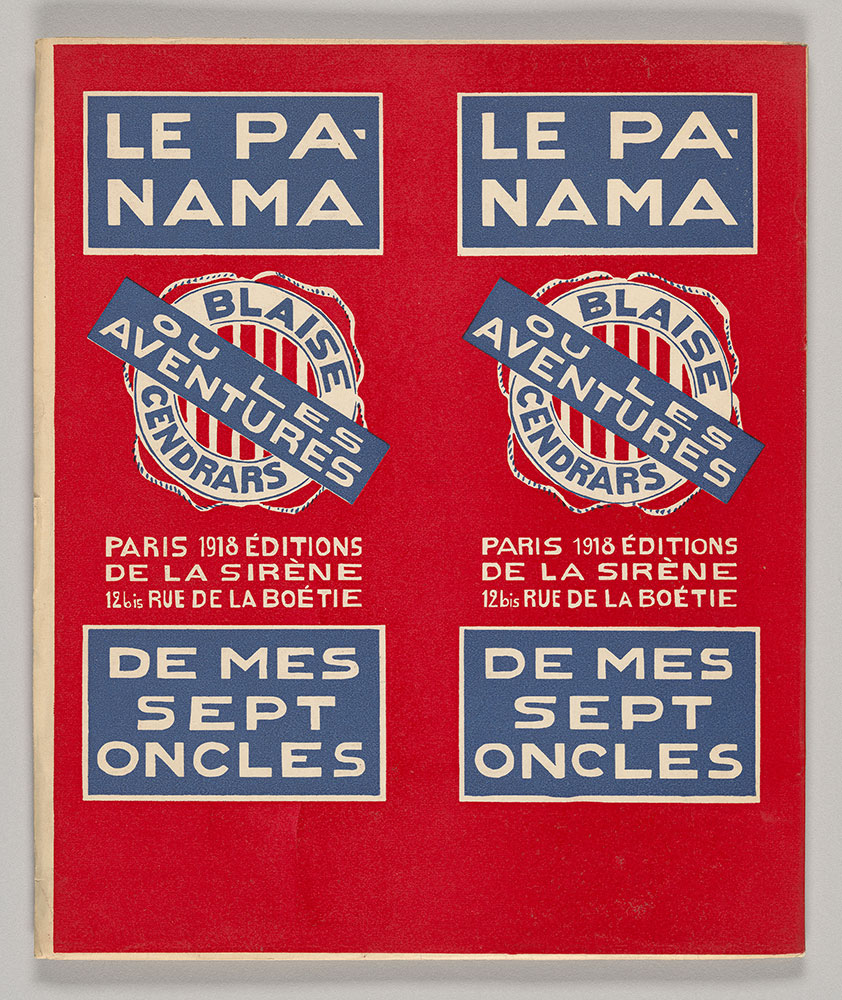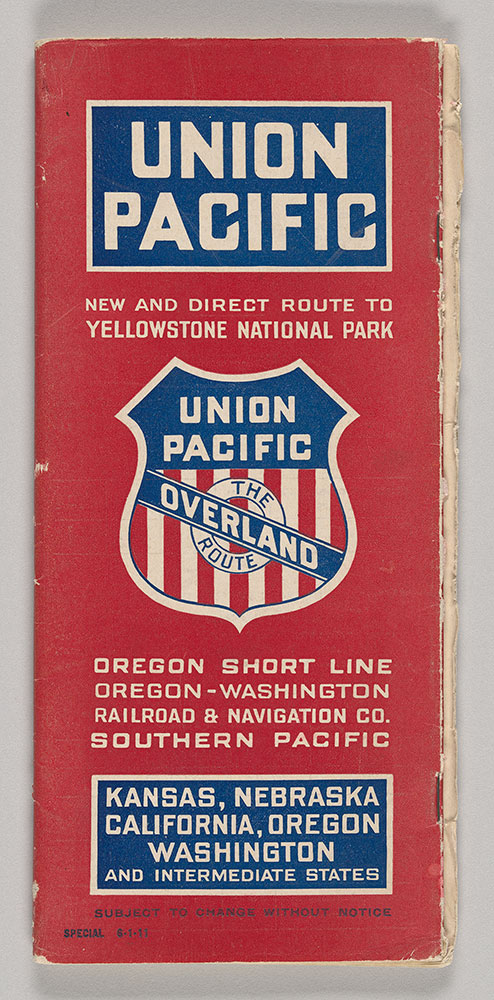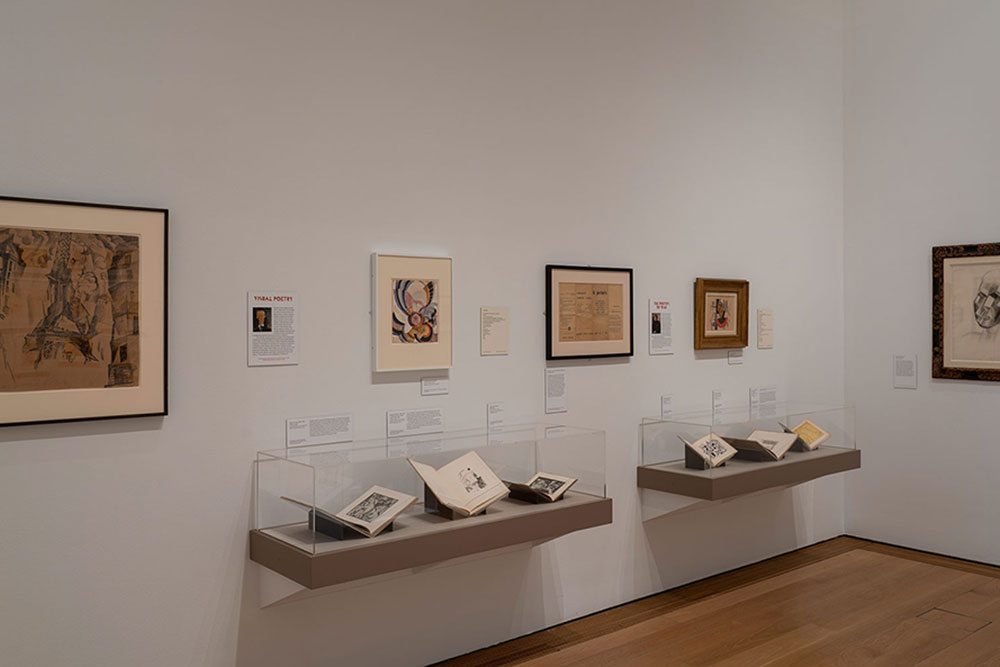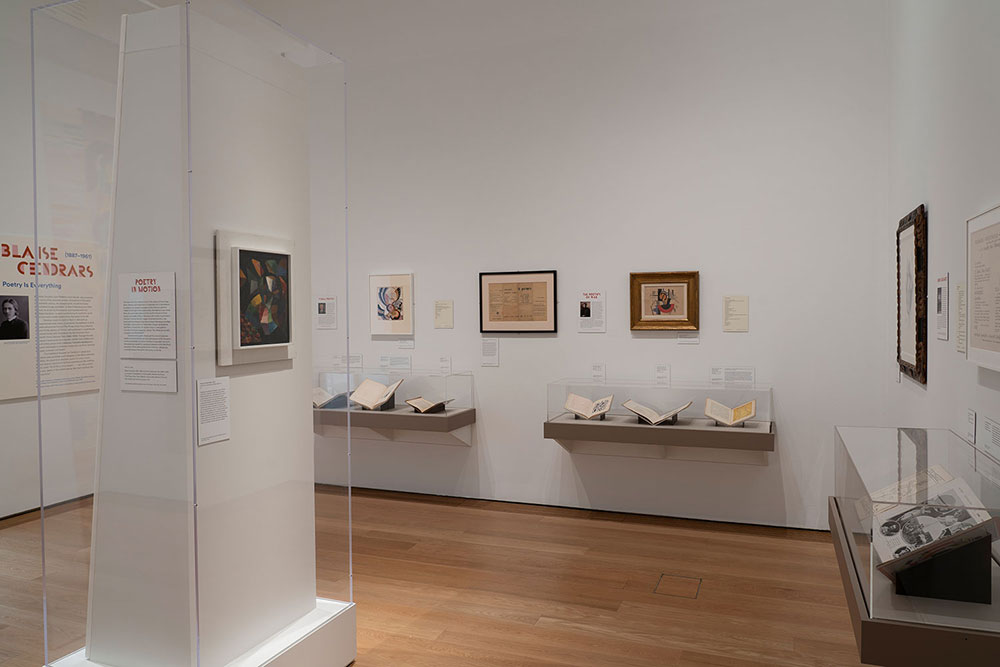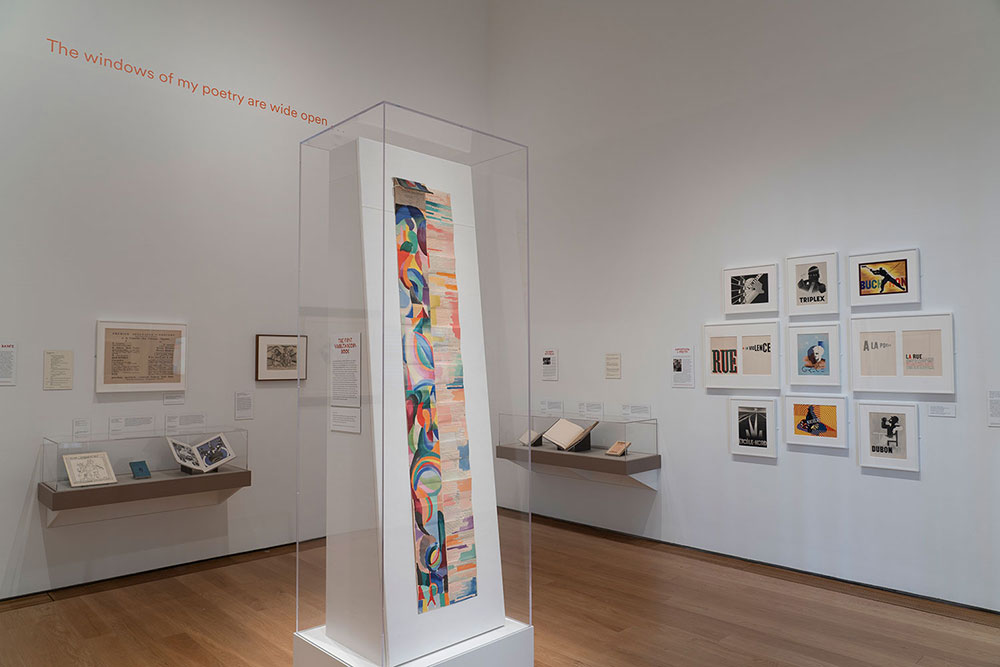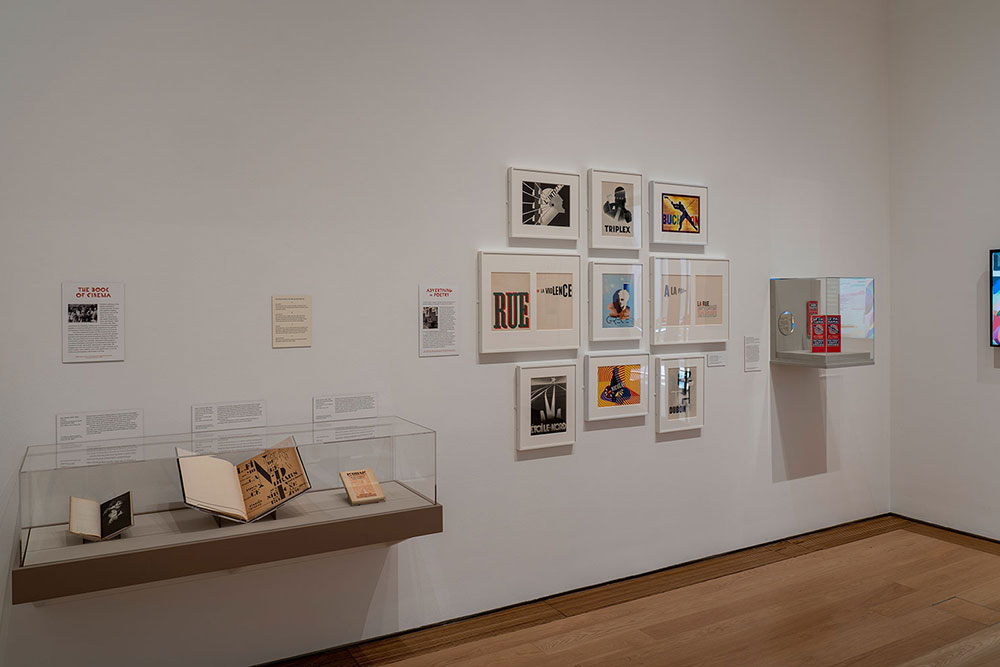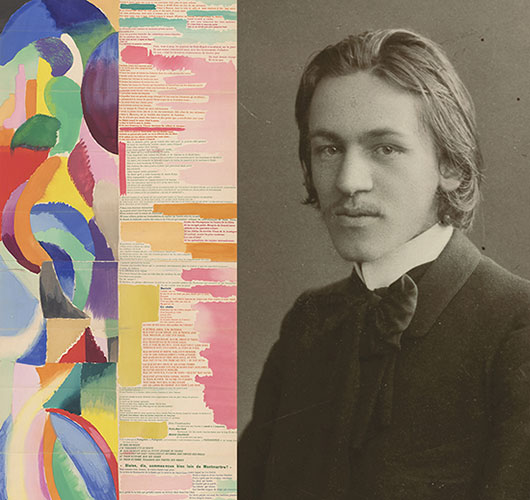
Blaise Cendrars, born Frédéric Louis Sauser, was a catalyst in some of the explosive artistic innovations of the early twentieth century. An intrepid spirit, he left his Swiss homeland at age seventeen. In Saint Petersburg and New York, he wrote his first poems and transformed into Blaise Cendrars—a name symbolizing his aesthetic goals: to burn and to create poetry from the ashes of his life.
Cendrars made his mark in Paris in 1913 with an experimental travel poem, La prose du Transsibérien et de la petite Jehanne de France (The Prose of the Trans-Siberian and of Little Jeanne of France), self-published in a spectacular vertical format with illustrations by the Ukrainian-born painter Sonia Delaunay-Terk (1885–1979). Through his subsequent experiences as a traveler, soldier, and collaborator with artists across many mediums, Cendrars developed a poetic philosophy to embody modernity’s rhythms, technologies, contrasts, and depth.
This installation focuses on Cendrars’s career as a radical poet, publisher, and instigator in the 1910s and early 1920s. He would soon abandon poetry to write novels and dubious memoirs of his truly adventurous life, fulfilling his credo: “All of life is only a poem. . . . I am only a word, a verb, depth, in the wildest sense, the most mystical, the most alive.”
All English translations of Cendrars’s poetry in the gallery are by Ron Padgett, from Blaise Cendrars, Complete Poems (Berkeley: University of California Press, 1992).
Blaise Cendrars (1887–1961): Poetry Is Everything is made possible by Beatrice Stern.
Photograph: August Monbaron, Portrait of Blaise Cendrars, 1907. Private Collection. Photo © Christie’s Images/Bridgeman Images. With detail of Blaise Cendrars (1887–1961), La Prose du Transsibérien et de la petite Jehanne de France. Illustrations by Sonia Delaunay-Terk (Paris: Éditions des hommes nouveaux, 1913). Gift of Dr. Gail Levin, 2021; PML 198726 © Blaise Cendrars/Succession Cendrars. © Pracusa 20230412



